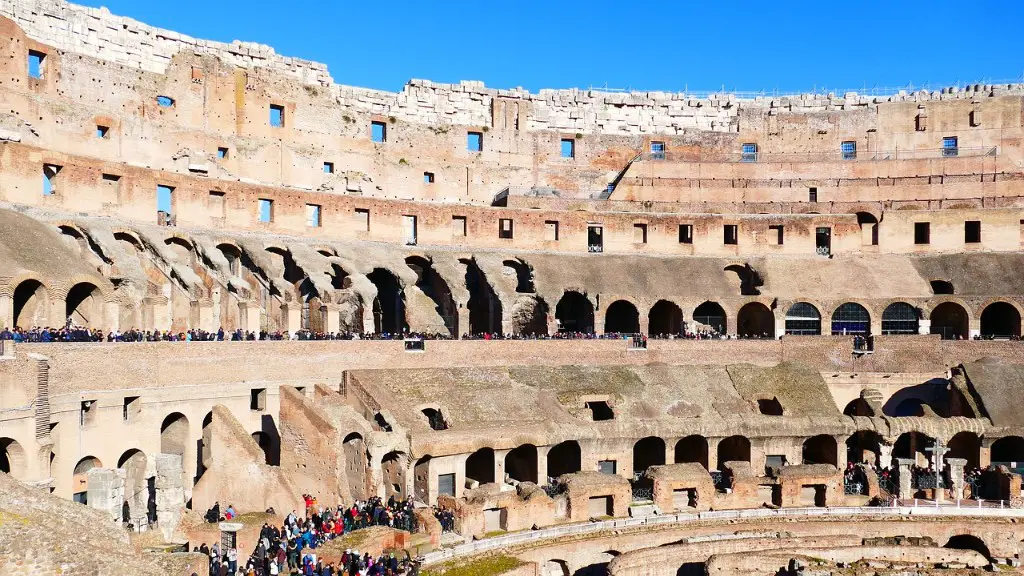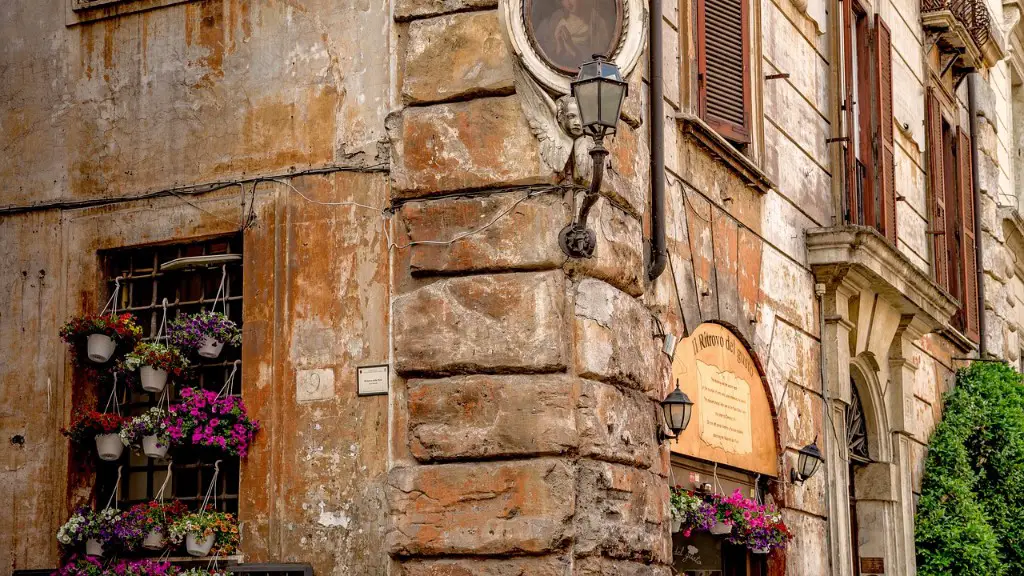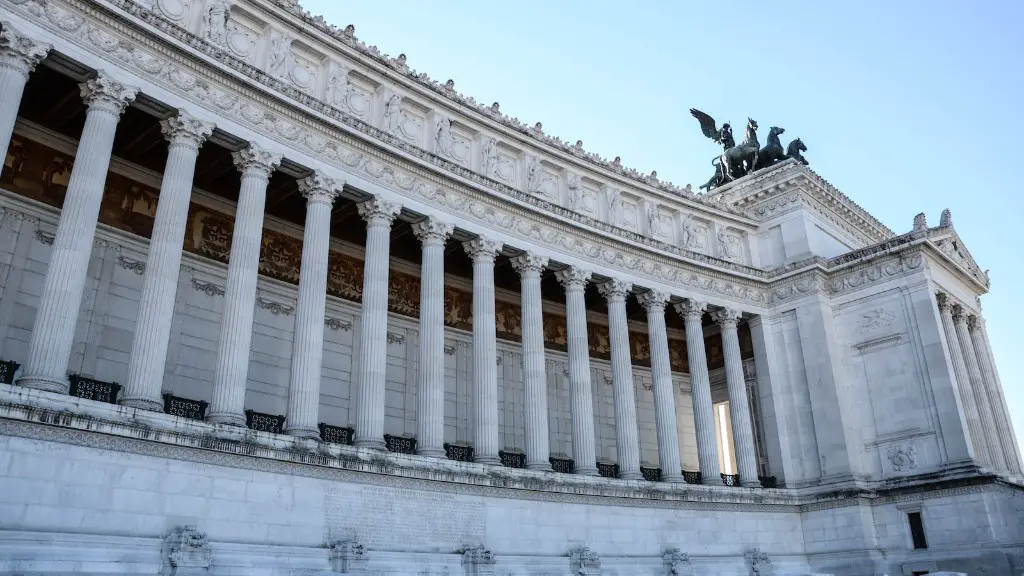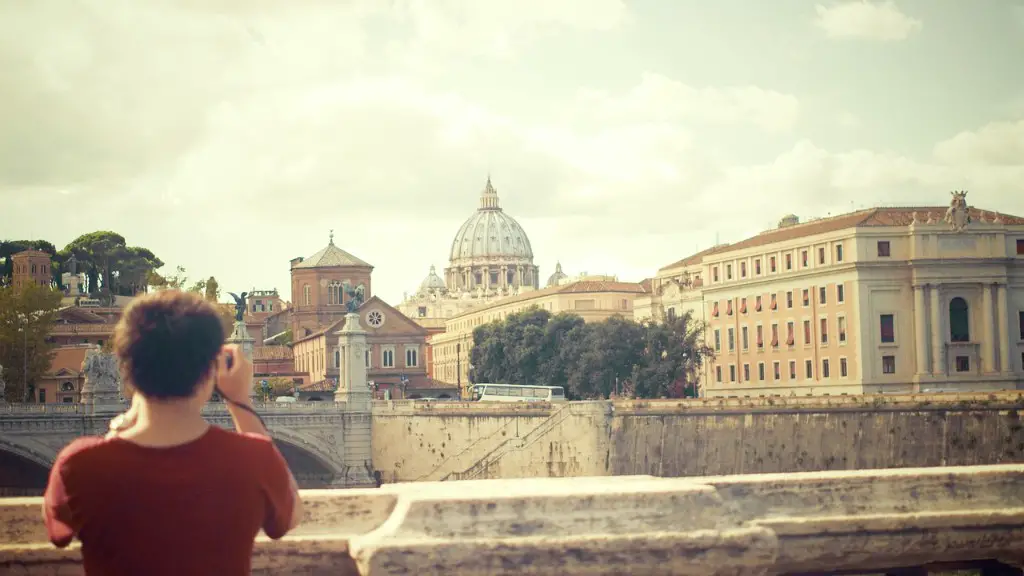The Roman Republic was established in 509 BC, and grew steadily in power over the next few centuries. By the 1st century BC, Rome was the largest and most powerful city in the world. The people of ancient Rome lived in a wide variety of ways, from the very wealthy to the very poor. The wealthy could afford luxurious homes with running water and slaves to do all of the work. The poor had to work very hard just to survive. They often lived in crowded, dirty apartments with no running water.
The ancient people of Rome lived a very simple life. There were two main ways that people in Rome made a living. The first was by farming and the second was by bartering goods. People would trade goods and services in order to get what they needed. This was how most people in Rome lived.
How did the Romans live their daily lives?
A typical day for a Roman would begin with a light breakfast and then off to work. Work would end in the early afternoon, at which time many Romans would take a quick trip to the baths to bathe and socialize. Around 3pm they would have dinner, which was as much of a social event as a meal.
Roman family life was based around the concept of the paterfamilias, or the head of the household. The paterfamilias was responsible for providing for the family, and was the final decision-maker in all matters pertaining to the family. In richer families, the paterfamilias often held well-paid political positions, while in poorer families, both the husband and wife often had to work. Wealthy Roman women ran their households and bought and trained the family’s slaves.
What was the Roman quality of life
Wealthy Romans lived a life of luxury and extravagance. They had beautiful homes, often on the hills outside of Rome, and were surrounded by servants and slaves to cater to their every need. This lifestyle was made possible by their wealth, which allowed them to live a life of ease and comfort.
It is interesting to note that in societies where people typically went to sleep three hours and 20 minutes after sunset and woke before sunrise, nearly no one suffered from insomnia. This may be due to the fact that sleeping through the night is a natural pattern that helps the body to repair and rejuvenate itself.
What time did Romans wake up?
The ancient Romans had a very different daily schedule than we do today. They would wake up before dawn and finish work by noon. Then they would spend the afternoons pursuing leisurely activities like swimming and exercising. At sundown, they would get together for elaborate dinner parties that often went on until late in the evening. It’s interesting to think about how our own daily schedules would change if we followed the Roman model.
Much of Roman culture was based on the Greeks, but as they grew they began to develop their own. Roman culture can be seen in their art, literature, and the architectural history where they conducted sports and games to entertain their citizens. Romans began writing literature as early as the 3rd century BCE.
What did Romans do for fun?
The state provided games for fun and entertainment in ancient Rome. The games were divided into two broad categories: ludi, or games, which included theatrical performances, dances, and chariot races; and munera, or spectacles, which included gladiator combats, wild animal shows, and other unusual exhibitions.
It is clear that the lives of ancient Rome’s rich and poor were very different. The poor lived in much more difficult conditions, with little access to basic amenities. It is no surprise that the wealthy were able to remain in much better health and lead more comfortable lives.
What food did Romans eat
The Romans primarily ate cereals and legumes, which were usually served with sides of vegetables, cheese, or meat. Their sauces were made out of fermented fish, vinegar, honey, and various herbs and spices. While they had some refrigeration, much of their diet depended on which foods were locally and seasonally available.
The ancient Romans were very disciplined in their daily lives and this extended to their sleeping habits as well. They would use the night time to study, meditate or do other things that required mental focus and concentration. This kind of sleep was natural for them because their bodies were not influenced by artificial factors like light and sound.
What was the average lifespan of a Roman citizen?
The Roman Empire had a high infant mortality rate, which contributed to a life expectancy at birth of about 22-33 years. While this is lower than life expectancy in developed countries today, it is still impressive given the technology and medical knowledge available at the time. The Roman Empire was also able to provide its citizens with a relatively long and healthy life, compared to other civilizations of its time.
Marriage in ancient Rome was a strictly monogamous institution: a Roman citizen by law could have only one spouse at a time. The practice of monogamy distinguished the Greeks and Romans from other ancient civilizations, in which elite males typically had multiple wives.
Did Romans sleep on beds
The wealthy citizens of ancient Rome slept on beds that were raised off the ground and made of metal, with woven metal supports to hold the feather or straw-stuffed mattress. Less-wealthy people had similar beds made from wood, with wool strings holding up the mattress. If you were poor, however, you still had to make do with a mat on the floor.
The term “Dark Ages” is a relatively modern invention, first coined in the late 15th century by Italian scholars. It’s intended to describe the centuries following the fall of the Roman Empire, when Europe entered a period of decline both culturally and intellectually. Many of the great classical works of antiquity were lost, and few new works were created in their place. This stagnation continued until the Renaissance, when a renewed interest in classical learning and the rediscovery of ancient texts led to a period of prosperity and growth.
What did a Roman house look like?
Atriums were a type of housing used by the ancient Romans that consisted of a single-story dwelling built around a central courtyard. These homes typically had several rooms opening up off of the atrium, and they did not have roofs. wealthy Roman households often had a large number of rooms, including kitchens, bathrooms, dining areas, bedrooms, and slave quarters.
The social structure of ancient Rome was based on heredity, property, wealth, citizenship and freedom. It was also based around men: women were defined by the social status of their fathers or husbands. Women were expected to look after the houses and very few had any real independence.
What are 5 facts about ancient Rome
Rome is a city founded in 735 BC. It is thought to be founded by Romulus in 753 BC. Cats are free to roam in Rome. The Roman’s eyes were bigger than their stomach. Men could only wear togas. Women wore stola’s. The coins in The Trevi Fountain were Roman. There was a Roman breathalyzer. Colosseum casualties were more common.
The Roman Empire was a primarily polytheistic civilization. This meant that the people living in the empire recognized and worshiped multiple gods and goddesses. There were also monotheistic religions present in the empire, such as Judaism and early Christianity. However, the Romans still honored multiple deities.
Conclusion
The ancient Romans lived in a city called Rome. The city was founded by a man named Romulus. It was originally built on seven hills. The Romans had a senate, which was a group of officials who made decisions for the city. The Romans also had an army. The army was divided into two groups, the infantry and the cavalry. The infantry was made up of soldiers who fought on foot, and the cavalry was made up of soldiers who fought on horseback. The Romans were very good at engineering, and they built roads and bridges all over their empire.
The people of ancient Rome lived in a time of great change. They saw the fall of their republic and the rise of their empire. They experienced the expansion of their world through trade and warfare. And they witnessed the transformation of their society through the introduction of new religions and philosophies. Through it all, the people of Rome maintained their strong sense of community and continued to thrive.





